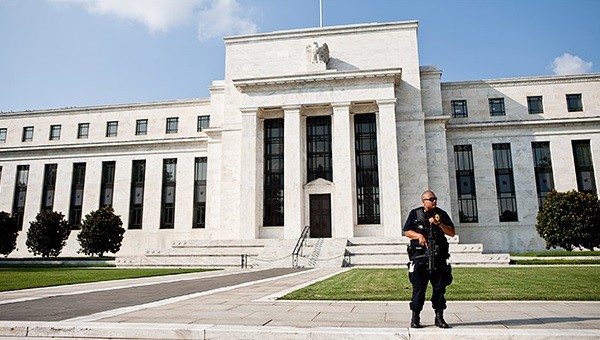Fed should keep trillions in bonds to provide stability

The U.S. Federal Reserve should scrap a plan to shrink its massive bond holdings and instead keep them “indefinitely” as a new and little-recognized tool to protect against financial shocks, according to research presented on Saturday to some of the world’s top central bankers.
Former Fed Governor Jeremy Stein and two colleagues at Harvard University concluded in a research paper that hanging on to the unprecedented stable of $ 4.5 trillion in bonds would allow the U.S. central bank to play a permanent role as provider of short-term Treasuries for investors hungry for safe assets.
That would in effect “crowd out” the network of private contracts that currently supply short-term funding to markets, which is seen as a stable system in normal times but a source of instability during crises.
The paper offers a simple solution to the Fed’s tricky task of unwinding years of bond buying. That so-called quantitative easing aimed to stimulate economic growth in the wake of the 2007-2009 recession, but it also roughly quintupled the Fed’s balance sheet with longer-dated Treasury and mortgage debt.
Reneging on its long-stated plan to eventually shrink that portfolio down to size, by either runoff or sales, could expose the Fed to criticism of overstepping its congressional mandate, distorting global financial markets, and of essentially making permanent what was to be an emergency policy stance.
But Stein and his fellow authors say that hanging on to the bonds would create a bulwark against the sort of runs in the short-term funding markets that allowed the financial crisis to spread globally into the deepest recession in decades.
“By expanding the overall supply of safe short-term claims, the Fed can weaken the market-based incentives for private-sector intermediaries to issue too many of their own short-term liabilities,” they wrote in the paper.
It was presented at a high-profile conference in Jackson Hole, Wyoming, where Fed Chair Janet Yellen and other central bankers gathered this week.
“The Fed can complement its regulatory efforts on the financial-stability front by maintaining a relatively large balance sheet (around $ 4.5 trillion) even when policy rates have moved well away” from zero, the paper’s authors added.
The Fed adjusts interest rates to meet U.S. inflation and employment goals. It raised rates in December for the first time in nearly a decade.
But well before that move, debate swirled over whether rate increases should also be used in part to deflate risky financial-asset bubbles.
SAVINGS FOR TAXPAYERS
As a Fed governor in 2013, Stein himself argued that monetary policy “gets in all the cracks” that regulatory tools like bank capital and stress tests can not.
The paper’s authors, including Robin Greenwood and Samuel Hanson of Harvard Business School, echo some other economists and even Fed officials who have recently suggested that bond holdings and not interest rates may be the required tool.
The paper suggests the Fed should reduce its mortgage debt and shorten maturities on its Treasuries. The New York Fed, however, has projected it will take until 2022 for the portfolio to reach an equilibrium level as assets mature.
Stein and his colleagues also say the Fed should ramp up an overnight repo-lending program to supplement the dearth in short-term bonds issued by the U.S. Treasury.
The central bank sent a record $ 97.7 billion in profits from its bonds to the Treasury last year, even while it paid banks some $ 7 billion in interest on their excess reserves. And while the payments to Treasury are expected to drop off, the paper notes that increasing repos while decreasing payments on excess reserves would “save taxpayers billions of dollars a year.”

